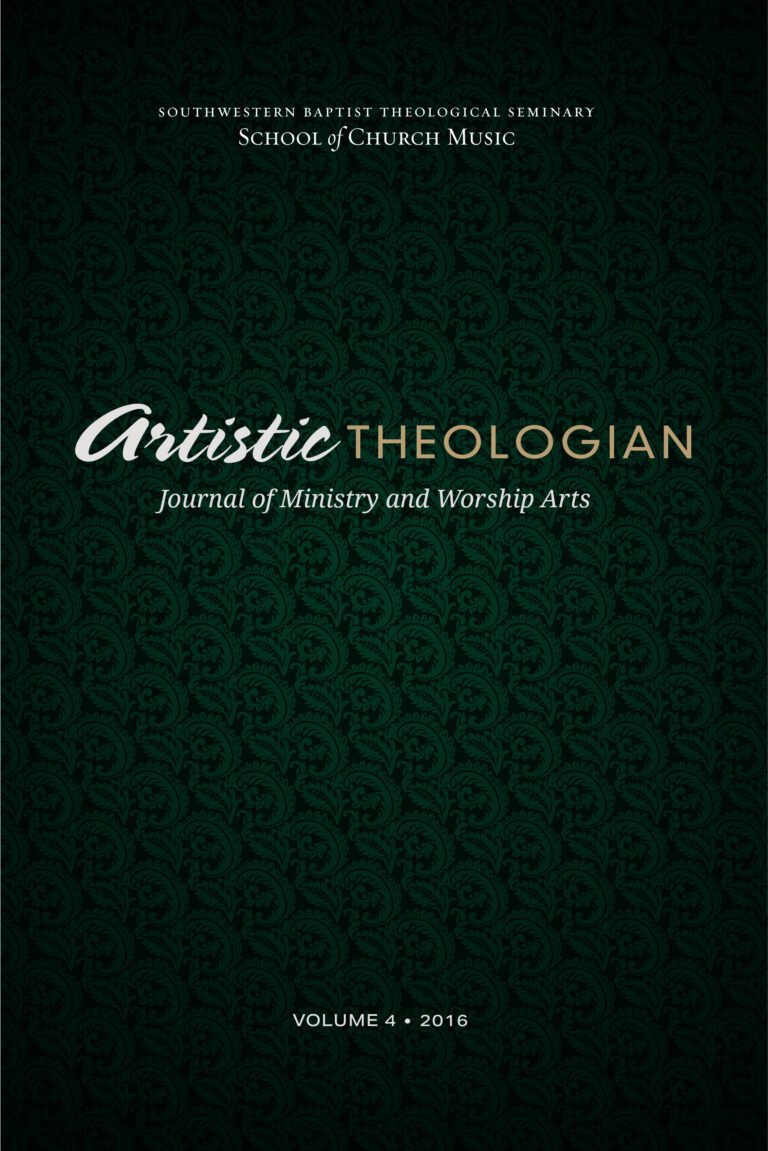
“Thus Says the Lord”: Biblical Worship in Contemporary Practice
Artistic Theologian
Volume 4, Summer 2016
Editor-in-Chief: Scott Aniol
Missional Worship, Worshipful Mission: Gathering as God’s People, Going Out in God’s Name, by Ruth A. Meyers. Grand Rapids: William B. Eerdmans Publishing Company, 2014. 242 pp. $21.74.
Ruth A. Meyers earned an undergraduate degree in special education from Syracuse University, a Master of Divinity from Seabury-Western Theological Seminary, and a Master of Arts and Ph. D. in liturgical studies from the University of Notre Dame. She is the Hodges-Haynes Professor of Liturgical Studies at Church Divinity School of the Pacific. In Missional Worship, Worshipful Mission, Meyers aims to shed light on the “missional” church. Through her writing, Meyers desires to prove to the reader that worship and mission are not separate categories but are of the same category and flow in and out of each other. Meyers believes that this should inform the church’s Sunday morning public worship liturgy to educate and form the congregation to take part in God’s mission, missio Dei, as an extension of public worship and return to public worship as a result of taking part in missio Dei.
After an introductory chapter of her thoughts on the connection of worship and mission, Meyers defines the terms that she will use continually throughout this book. These terms include worship and liturgy, and we are also introduced to two forms of visual aid Meyers uses to help make the connection between worship and mission, the “Möbius strip” and the spinning top. With these definitions and aids in places, Meyers then proceeds to explain how worship and mission are connected throughout different parts of common church liturgy. These common parts of liturgy include the gathering of the people, proclaiming and responding to the word of God, praying for the world or intercessory prayer, enacting reconciliation, celebrating communion, and going forth in the name of Christ. Throughout each of these common parts of church liturgy, Meyers informs the reader of her observations on these liturgical parts and how she has concluded that each of these can be and is linked to mission. To conclude her book, Meyers gives the reader tips that she believes will be helpful in planning a missional worship service.
The organization of this book lent itself well to the explanation of how each portion of the worship service can be connected to mission. The strength of organizing the book this way was that it started with this simplest portion of worship, the gathering of the people, and progressed into the meatier portions of worship, such as the reading and response of the Word and intercessory prayer. Another strength to Meyers’s argument is that in each chapter, she breaks down the section of the liturgy being discussed and shows how that section not only points the worshiper back to God’s mission but also how it would, if properly addressed, educate and form the worshiper into thinking about how that translated into going out and taking part in God’s mission outside the church. Thus, Meyers clearly demonstrates through many means the flowing of worship into mission into worship.
This is most evident in her chapter on intercessory prayer. When intercessory prayer is included in the liturgy of the worship service, “the assembly joins in the prayer of Christ for these needs and concerns and so participates in Christ’s priestly ministry. Offering intercession for the needs of the world is thus a form of participation in God’s mission” (108). Meyers adequately shows how participating in intercessory prayer allows the worshiper to take part in God’s mission by showing his reconciling love toward the world.
There are some points where Meyers seems to contradict herself. One instance of this is seen first on page fifty-two where Meyers points out that she was on the commission that was developing resources for blessing same-sex marriages. Scripture clearly points out the sinfulness of same-sex relationships. Looking beyond this issue and relating it to Meyers’s argument, the idea of blessing same-sex marriage can be seen as showing God’s love to the sinful world. So on the one hand, it can be seen as taking part in God’s mission to reconcile the world. However, a dilemma arises when the connection of blessing same-sex relationships to worshipful mission is attempted. If worship is lifting praises and giving glory to God, how can one praise God and give glory to him through the condoning of a sinful behavior? The logic does not follow to fit both sides of Meyers’s argument.
This book can prove to be a valuable resource for both those who participate in worship and also those who lead worship. While there are a couple of theological issues that would concern most evangelical Christians, the overarching line of thought of missional worship is valuable. This book would also provide a great platform for discussion amonng those studying worship and the missional movement. In the end, Meyers’ book was well organized, informative, and useful.
Matthew Stringfellow
Southwestern Baptist Theological Seminary





